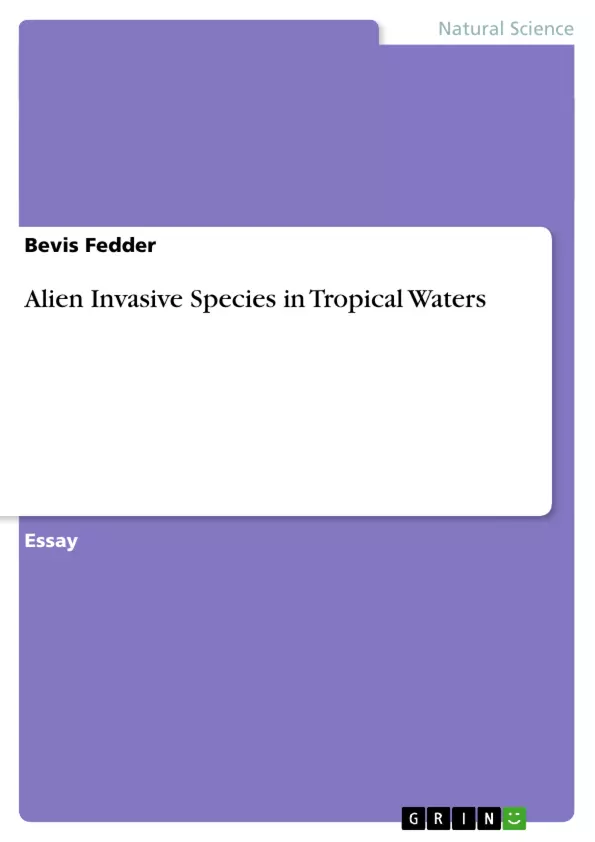In the first part, this essay aims at providing a rough overview about the most important topics in the literature dealing with alien invasive species. This overview tries to answer questions about the general biology of alien invasive species and the existence of a perfect invader. However, some ecosystems seem to be more susceptible to invasion than others do. General assumptions are that the tropics are less invasible than temperate regions and that islands are more vulnerable than continental areas. An alien species must complete three stages of human-mediated spreading which are transportation, introduction and establishment in order to become invasive. An alien invasive species might then have positive or negative impacts. Either it adds to the species richness or it has detrimental effects on the ecological, economical or human health sector. However, sophisticated treatments are available to prevent several means of introduction. The second part of this essay will provide a critical evaluation about the literature reviewed. There still exists a great deal of uncertainty and variety of opinions within publications. The need of increased prevention of introductions and collaboration are conclusions that can be drawn. Furthermore, public awareness has to be raised and a clear definition of terms is a must. Finally, it is important to recall that many alien species are responsible for human well-being by providing food and aesthetics.
Inhaltsverzeichnis (Table of Contents)
- Abstract
- Introduction
- Biology
- Susceptibility of ecosystems
- Mechanisms of Dispersal
- Transportation
- Introduction
- Establishment
- Impact
- Measures
- Prevention
- Mitigation
- Discussion
- Conclusions
- References
Zielsetzung und Themenschwerpunkte (Objectives and Key Themes)
This essay provides an overview of alien invasive species (AIS), addressing their biology, ecosystem susceptibility, dispersal mechanisms, and impacts. It also explores prevention and mitigation measures.
- Defining and characterizing alien invasive species
- Analyzing the mechanisms of dispersal and establishment of AIS
- Assessing the ecological, economic, and human health impacts of AIS
- Evaluating strategies for prevention and mitigation of AIS
- Discussing the uncertainties and differing opinions within the literature on AIS
Zusammenfassung der Kapitel (Chapter Summaries)
The Introduction defines terminology related to AIS and highlights the ongoing debate surrounding the definition of "invasive." The Biology section discusses the difficulty in identifying potential invaders and outlines characteristics that make certain species more successful in new environments, using the western mosquitofish as an example. The Mechanisms of Dispersal section details the three stages—transportation, introduction, and establishment—necessary for an alien species to become invasive. The Impact chapter will explore the consequences—both positive and negative—of AIS introductions. The Measures section will present various strategies for the prevention and mitigation of AIS.
Schlüsselwörter (Keywords)
Alien invasive species, biological invasion, ecosystem susceptibility, dispersal mechanisms, impact assessment, prevention, mitigation, western mosquitofish, Gambusia affinis.
- Quote paper
- M.Sc. Bevis Fedder (Author), 2006, Alien Invasive Species in Tropical Waters, Munich, GRIN Verlag, https://www.hausarbeiten.de/document/121500


